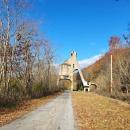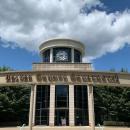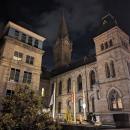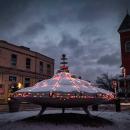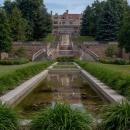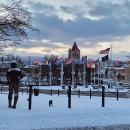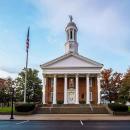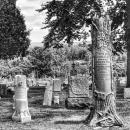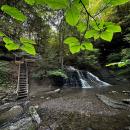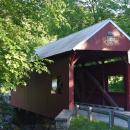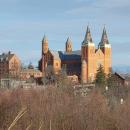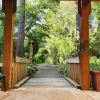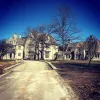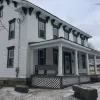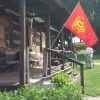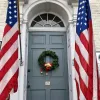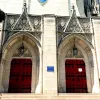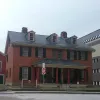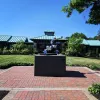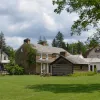Leechburg Area Museum and Historical Society is located in the David Leech house -- the oldest house in Leechburg.
Southwestern Pennsylvania
The southwestern corner of Pennsylvania is the area that was the original Washington County, formed on March 28, 1781. This is the land to the west of the Monongahela River, from the West Virginia line north and west and south of the Ohio River to the Ohio line.
Parts of the original Washington County are now Greene and portions of Beaver and Allegheny Counties. Both Pennsylvania and Virginia initially claimed this Southwestern Pennsylvania portion of the Commonwealth.
The first National Road, Route 40, came through our area, along with endless visits by the famous surveyors George Washington, Lafayette, George Rogers Clark, James Monroe, Andrew Jackson, and many other renowned people.
Join Western Pennsylvania and Pittsburgh Museums to learn more about the county's notable ancestry—and possibly your own.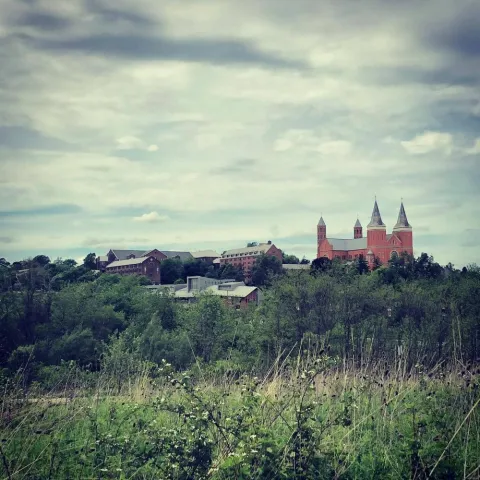
Museums
Visions of the past come alive at the Rebecca Hadden Stone House Museum. Locally donated and shared artifacts from the mid-19th century to the early 20th century adorn the rooms, and a beautifully maintained herb and perennial garden graces the grounds.
Rodef Shalom Biblical Botanical Garden was established in 1987. It is the largest biblical botanical garden in North America (1/3 acre) and the only one with an ongoing program of research and publication.
The County’s third Courthouse, built in 1856, is an elegant structure with a large portico, stone columns, and a highly ornamented dome. The former jail is a gothic-style structure attached to the Courthouse.
Baker Mansion initially was the home of Elias Baker and his family. It now hosts the museum, the county historical society, and a library with a historical archive.
The Lawrence mansion is maintained as a house that evokes the elegant lifestyle of the Lawrences rather than a museum. It houses an excellent collection of original English and American antiques.
Consistent with its mission statement, the Freeport Area Historical Society purchased the Valley Mills and adjacent property in 1998. The purpose is to rehabilitate the building into an operational mill, creating an atmosphere reminiscent of the mid-1900s.
Maridon is the only museum in the Western Pennsylvania region specializing in Asian culture, including art objects from China and Japan.
The Heinz Memorial Chapel began as a gift. Henry John Heinz, the founder of the Heinz Company established the building as a gift to his mother, Anna Margaretta Heinz. After Heinz’s death, his three surviving children added to his bequest to memorialize their grandmother and honor their father.
On April 22, 1976, the Marshall House became the first building in Armstrong County to be added to the Pennsylvania Inventory of Historic Places. In May 1976, it was also placed on the National Register of Historic Places.
During the 1892 labor strike, which pitted Carnegie Steel Company against the Amalgamated Association of Iron and Steel Workers, the Bost Building served as the union's local headquarters and as the base for American and British newspaper correspondents reporting on the event.
Fort Roberdeau Historic Site and Natural Area includes an 1858 barn containing exhibits and a museum shop, an education center in an 1860 farmhouse, three nature trails, picnic facilities, and White Oak Hall, a large multipurpose facility.
The building was erected in 1909 as the Apollo headquarters for the Women’s Christian Temperance Union. It housed the first public library in Apollo and Armstrong County. The building is now the home of the Apollo Area Historical Society and its museum.
Frank L. Melega, known for his depiction of the Coal & Coke Era; used a wide range of styles, subjects & media throughout his artistic career.
Mount Pleasant Glass Museum celebrates three glass companies from Mount Pleasant: Bryce, Lenox, and L.E. Smith. Among our treasures are the first headlight lenses made for the Model T and blown and cut crystal glassware used in the White House from the 1920s to the present day.
Drake's Log Cabin is a one-room log cabin that shows how early settlers lived. Items from the era are on display.
Organizations
The Allegheny-Kiski Valley Historical Society is a non-profit, permanent institution whose primary mission is interpreting, preserving, and celebrating our cultural, industrial, and ethnic heritage of the Allegheny and Kiskiminetas river valleys in southwestern Pennsylvania, a region embracing th
Founded in 1908, the Westmoreland County Historical Society is dedicated to promoting and fostering knowledge, understanding, and appreciation of history in general, as well as all aspects of the history of Westmoreland County and its people, including those areas within its former boundaries.
The Zelienople Historical Society maintains a museum in Passavant House with many of the original articles brought by Zelie.
Based at the University of Pittsburgh and housed in the Stephen Foster Memorial, the Center for American Music is a library, archive, and museum dedicated to expanding and documenting knowledge of American music and its role in Americ
This Society attempts to fill the historical and genealogical needs for all within a 35-mile radius that do not have a historical organization of their own. They presently own and maintain two cemeteries:
Long before European colonists arrived, the land that is now Butler County, Pennsylvania, was under the control of the Iroquois Confederacy. This changed in 1753, when the French began establishing a series of forts in the region, culminating in the French and Indian War.
The Historical & Genealogical Society of Indiana County in western PA serves a largely rural area noted for its forest, mineral resources, and scenic beauty. In 1938, it was founded as a private membership organization.
Once considered New Castle’s “best kept secret”, the word is out on the Hoyt Institute of Fine Arts and its vision to “provide the best possible arts to the greatest number of people”!
Incorporated on February 22, 1988, the Ellwood City Area Historical Society is dedicated to preserving and promoting the rich history of our community.
The Lawrence County Historical Society is located in New Castle. The home of former tin plate mogul, George Greer, is resplendent in its glorious woodwork and fine leaded beveled glass made by the Fry Glass Company in Rochester, Pennsylvania.
The Foundation established in 1971, December 14, is a non-profit organization. The name of Beaver County Historical Research and Landmarks Foundation comes from the County name where it is situated.
The Fayette County Historical Society is a non-profit organization established in 1971. Its mission and purpose are to find, collect, and preserve materials that portray the history of the county and the society.
The Society's goal is to arouse interest in local history and historic preservation through education, publications, meetings and events. Since its inception, the Society has grown to include more than 550 members and a permanent museum.
The Latrobe Area Historical Society of Westmoreland County, Pennsylvania, is dedicated to the collection, study and documentation of the Latrobe community's heritage and to the preservation of local history and its ethnic roots.Periodically the Society offers to the public special programs of his
The mission of the Ligonier Valley Historical Society discover, collect, preserve and disseminate any material which will help to establish or illustrate the exploration, settlement, development and general history of the Ligonier Valley area.
The McKeesport Heritage Center operates a museum and a research center. The museum has numerous displays of local memorabilia, including old photographs.
The mission of the Society for Contemporary Craft is to engage the public in the creative experience as expressed through contemporary craft.The organization seeks to move viewers beyond familiar frames of reference and challenge them to think in new ways about art, while also raising standards o
Opened in October 1988, Perryopolis Area Heritage Society is managed by local enthusiasts who want to preserve, promote, and develop the town's and neighborhood's historical structures and heritage. It is a Pennsylvania-chartered organization with 501(c) (3) not-for-profit status.
Organized in 1994 with 11 members, the Smock Historical Society preserves the heritage of the coal mining community, Smock, and the neighborhood.
The William Pitt Union, originally opened in 1898 as the grand Hotel Schenley, has been magnificently restored and now provides students with recreational and social facilities. Its amenities include beautiful study and social lounges, 19th-century ballroom, and modern offices.

